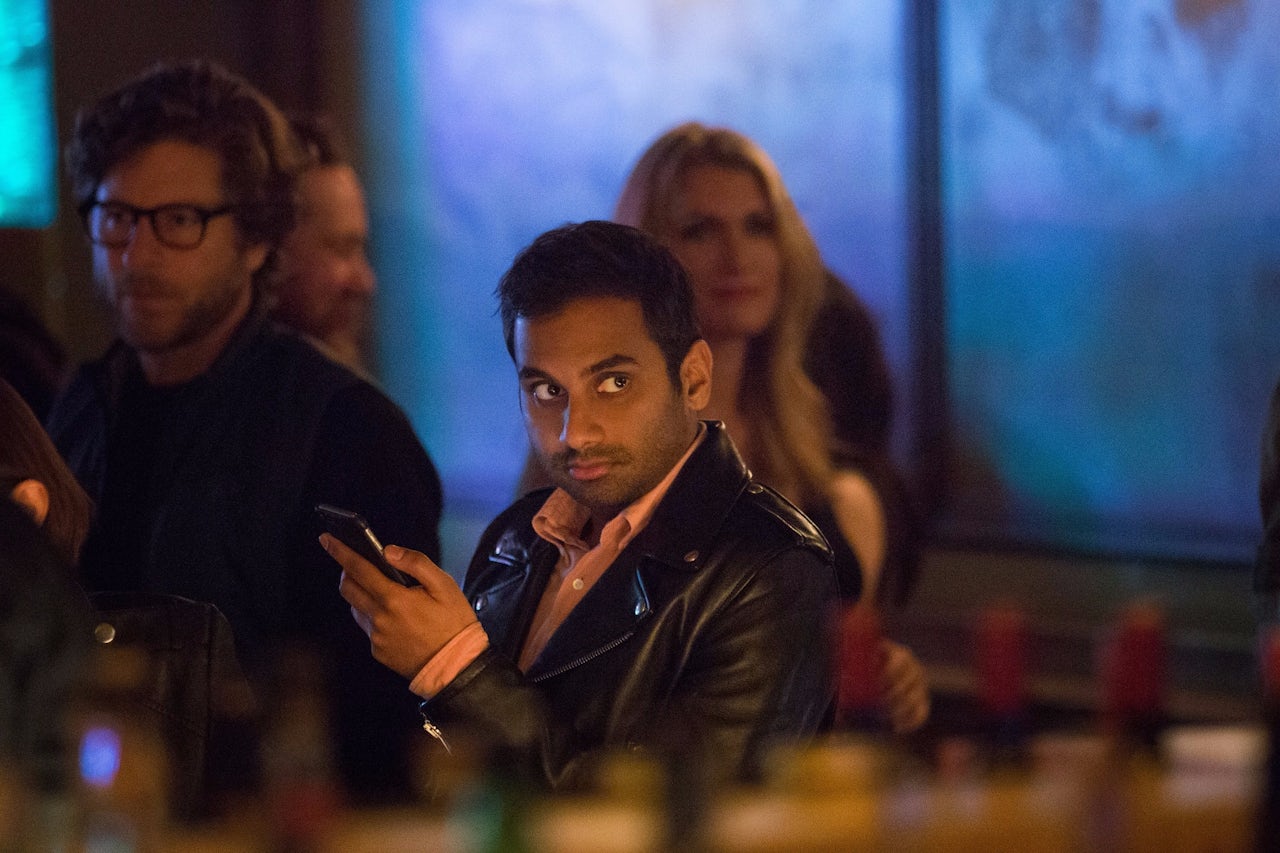Walking through parts of New York City, especially in zones where investor capital has transformed large plots of earth into mountains of glass high-rises, it can feel as though you’re sharing the streets with ghosts. The city’s people — its freaks, wanderers, and regular-degular inhabitants — can seem hidden by prefabricated condominiums and posh wine bars. It is among the symbols of this paved-over metropolis that the characters of Masters of None, the Netflix series created by Aziz Ansari and Alan Yang, live and appear most comfortable.
Even in its socially conscious moments, Master of None can feel more like an after-school special than real life.
The show’s second season, whose 10 episodes premiered last Friday, is a stylized look at modern romance in New York City, from the perspectives of people who can actually afford $3,000-per-month apartments and $18 cocktails. Almost an entire episode takes place at The Four Horsemen, the Williamsburg bar and restaurant owned by LCD Soundsystem’s James Murphy. In most scenes, only a handful of extras appear in the background, as though the busiest city in the world is but a dream concocted by a certain class. For all of the praise the series has received for tackling issues such as race, sexism, and representation in Hollywood, Master of None is unconcerned with the tensions of the city to which it owes its appeal.
This gentrified perspective isn’t the result of a lack of trying. The second season touches on some of the broader social issues introduced in season one. In an episode titled “Religion,” Dev (the show's protagonist, played by Ansari) confronts his parents about the fact that he’s not a practicing Muslim. In another episode, the story of how Dev’s longtime friend Denise came out as gay to her parents is told through a series of flashbacks to Thanksgiving dinners from the ’90s to the present. The episode attempts a compassionate, nuanced picture of the difficulties black women face in America.
In yet another episode, a Tinder hookup goes awry when Dev notices a doll in blackface on his white date’s shelf. “Have any black people seen this?” he asks. “So I’m the darkest-skinned person who's seen this and I find it offensive,” he says before being asked to leave. (Naturally, the white woman took Dev’s offense personally). But even in its socially conscious moments, Master of None can feel more like an after-school special than real life.
Dev’s character floats above reproach with a mawkish charm that makes it hard to care about him at all.
For all of the show’s “woke” sensibilities, Master of None doesn’t ask big questions of itself. In the second season, a romance with an engaged woman comes across as remarkably selfish, with Dev’s fantasies transposed onto his whimsical, unavailable Italian muse. Even as the series artfully mimics the Italian romances its narrative emulates, the schtick is a little much and Dev’s character floats above reproach with a mawkish charm that makes it hard to care about him at all. Throughout Master of None, the one character who develops the least is the one who is most important.
Master of None delivers on artfully gliding through a trendy tourist guide’s version of New York. But just as there are barely any crowded streets or bombastic teenage train riders, the show feels set in a weightless alternate reality. It presents a fervently optimistic view of the world, where people have difficult conversations with each other simply because they should and where the nice guy always gets the girl. In recent interviews, Ansari has seemed ambivalent about continuing the series, and with this season’s conclusion, it might be for the best.

